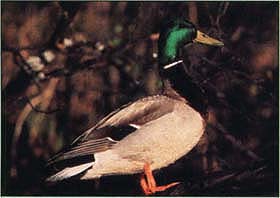All Issues
Sidebar: Waterfowl and rice in California's Central Valley
Publication Information
California Agriculture 49(6):62-62. https://doi.org/10.3733/ca.v049n06p62
Published November 01, 1995
PDF | Citation | Permissions
Abstract
Abstract Not Available – First paragraph follows: Wetlands of California's Central Valley historically held one of the largest concentrations of wintering waterfowl in the world. In wet winters, some 2 million to 4 million acres of seasonal and semi-permanent wetlands were flooded in the Valley. It is estimated that as many as 40 million to 50 million waterfowl once funneled down the Pacific Flyway — from the arctic tundra of the Northwest Territories, the boreal forests of Alaska, the prairies of Canada, and the alkaline flats of the Great Basin — to the Central Valley. As recently as the 1970s, some 10 million to 12 million swans, geese, and ducks wintered in or migrated through California; large numbers of other waterbirds such as shore-birds, cranes, wading birds, rails, grebes and gulls also came.
Full text
Wetlands of California's Central Valley historically held one of the largest concentrations of wintering waterfowl in the world. In wet winters, some 2 million to 4 million acres of seasonal and semi-permanent wetlands were flooded in the Valley. It is estimated that as many as 40 million to 50 million waterfowl once funneled down the Pacific Flyway — from the arctic tundra of the Northwest Territories, the boreal forests of Alaska, the prairies of Canada, and the alkaline flats of the Great Basin — to the Central Valley. As recently as the 1970s, some 10 million to 12 million swans, geese, and ducks wintered in or migrated through California; large numbers of other waterbirds such as shore-birds, cranes, wading birds, rails, grebes and gulls also came.
The conversion of historic wetlands in California has been extensive. Less than 330,000 acres of wetlands remain in the Central Valley, and most of these systems have been hydrologically altered so that intensive water management by either public or private entities is required to mimic seasonal cycles. Today the Central Valley supports only 3 million to 6 million wintering waterfowl — still one of the largest single concentrations in North America. These waterfowl represent more than 60% of all those wintering in the Pacific Flyway and approximately 20% of all those wintering in North America.
Because of these wetland limitations, many waterfowl species are highly dependent on harvested grain fields — rice, wheat, milo, and barley — for food in migration and winter. Harvested rice fields have been an important habitat component in filling some of the nutritional and energetic needs of several waterfowl species. Those that are common in shallowly flooded rice fields include the white-fronted goose, snow goose and Ross' goose; the tundra swan; and the mallard, northern pintail, green-winged teal and American widgeon. Less common species that use harvested rice fields include the gadwall, northern shoveler and bufflehead.
Although ricefields do not directly replace the value of lost wetlands, saturated or shallowly flooded rice fields add to the complex of other small-grain fields and wetlands that constitute the critical wintering habitat of Pacific Flyway waterfowl. As conditions improve in the prairie pothole breeding region of Canada and the United States (including Manitoba, Saskatchewan, Alberta, the Dakotas, Minnesota and eastern Montana), true conjunctive use of grain production and waterbird wintering habitat will be critical to waterfowl survival and recruitment.





